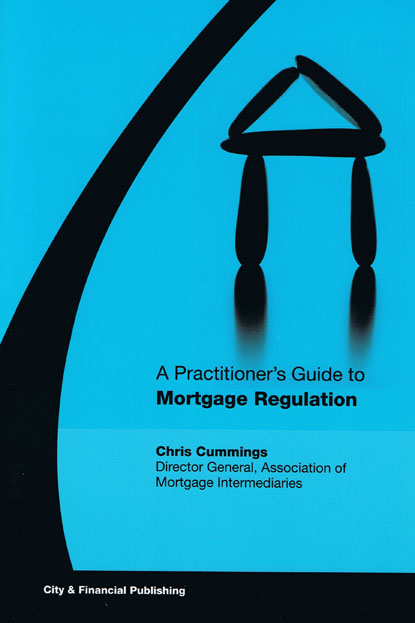
This was a follow up to A Practical Guide to the FSA's Regulation of Mortgages by the same author. from the foreword by the Rt. Hon. John Gummer MP:
Statutory mortgage regulation fundamentally reshaped the mortgage market back in October 2005. Yet, even so, regulation doesn’t stand still. Instead, sometimes by degrees sometimes by leaps and bounds, it continues to change the dynamics of the industry. Practitioners, busy serving their clients, often find the pace and the degree of change a serious concern. This book provides them with the essential tools to keep abreast of those changes and understand and prepare for what is to come.
The mortgage industry has always prided itself on being a low risk and low complaints business. This is the financial service where consumers are best engaged. The increase in the value of property; the willingness to tap into that equity; and the growth of public understanding of the mortgage market has increased intermediary business. That increase has proved that information and education are good prompts to help people discover that they benefit from professional advice. The consumer media – both in terms of articles helping educate consumers and best buy tables giving them comparative information - has meant that re-mortgaging activity has increased substantially and the market has developed dramatically.
It is a dynamic, entrepreneurial, and fast moving market - one of the most sophisticated and competitive in Europe. To date, regulation has not hindered its ability to serve its customers and we must work hard to ensure that this remains the case. Appropriate and proportionate regulation benefits both the firm and the consumer but regulators must realise when they cross the line and, instead of protecting consumer, begin to rob them of their right to choose and decide for themselves. Rewards only come with risks attached. We must learn again the meaning of caveat emptor. It is not a licence to mislead or to excuse low professional standards but it is a necessary part of a dynamic market place. It allows for innovation and enables risk taking. Absolute protection is absolutely certain to mean a mediocre return.
The market awaits the European Commission’s Mortgage White Paper with concern. It is important that we engage with the Commission to ensure they understand that the retail market is performing well and has the consumer properly in mind. Regulation is the last resort not the first option and the Commission would be better to focus its attentions elsewhere.
I am sure that this book will help all of us to have a better understanding of the challenges now faced by the market. There is no doubt that those who plan for change and seek ways to influence it will fare far better than those who simply wait and accept what comes. Practitioners have the opportunity to shape the market, not least through membership of the Association of Mortgage Intermediaries. It is important that all who rely on the industry for their livelihood play a bigger part than ever before in its development. This book will help all of us to make a difference.